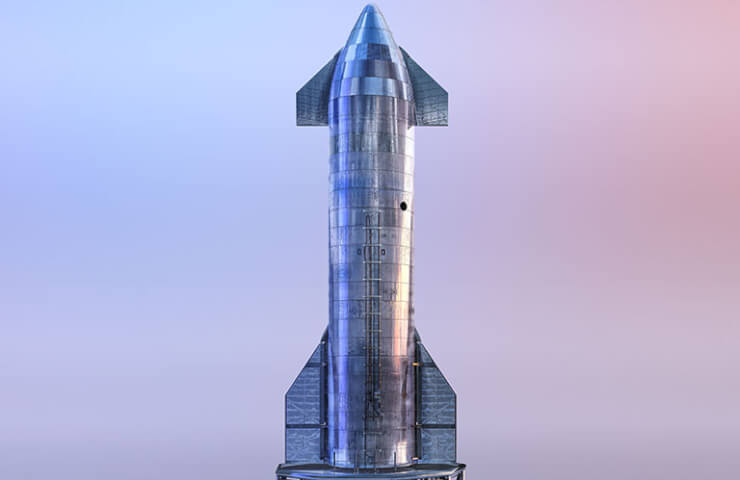Founded in 2002 by Elon Musk to reduce the cost of space travel enough to make colonization of Mars possible, SpaceX is developing Starship, a fully reusable, privately funded launch system for interplanetary and orbital spaceflight.
What makes this rocket unique is the material chosen for the body of the Starship rocket and its super-heavy booster. It was originally planned to be built from state-of-the-art carbon fiber, but then SpaceX announced that it would be replaced by shiny 300-series stainless steel.
This is the first use of this material in a rocket since the failed attempts of the Atlas intercontinental ballistic missile (ICBM) program in the 1950s. However, since Starship is designed for interplanetary travel, material choice is an important factor in the success of Spacex's attempts to reach the fourth planet from the Sun.
SpaceX Big Falcon Rocket
The characteristics of stainless steel mean that the Starship can withstand extremely hot and extremely cold temperatures.
The high melting point of stainless steel is an important advantage when it comes to space travel. Aluminum or carbon fiber is limited to a stationary operating temperature of 150 °C with short periods of operation at around 180–200 °C, but this causes the material to weaken. Some carbon fibers can run continuously at 200°C, but they have compromises in strength.
Steels with appropriate heat dissipation control can operate at temperatures up to 820-870°C. Thus, Starship's heat shield will use an innovative steel system that protects the ship from the high temperatures experienced when entering an atmospheric planet such as Mars or Earth.
The heat shield consists of two layers of stainless steel connected by stringers between which water flows. There are micro-perforations on the outside which then allow the water to "flow out", keeping the temperature low through evaporative cooling.
Reducing the cost of traveling to Mars is critical to the overall success of the project, and here stainless steel greatly outperforms its competitors. Carbon fiber costs $135 per kilogram, and more than a third of the material is recycled during the production process, meaning the real cost is about $200 per kilogram. An equivalent amount of stainless steel will cost you only $3.
Planet Mars
The incredible economic benefits and performance of stainless steel are vital to the success of the SpaceX mission to Mars.
When taking a ship out of the earth's atmosphere, every gram must be taken into account and, if possible, excluded. Traditionally, steel has not been considered an easy option, but stainless steel's unique properties actually make it the best choice for weight reduction.
In the cold darkness of space, the temperature stays at -270°C. At these cryogenic temperatures, the strength of stainless steel is increased by 50%. The content of chromium and nickel in its composition means that it does not become brittle even at very low temperatures.
For an interplanetary rocket, the ideal material is high ductility, high impact strength and a very low probability of destruction when working in cryogenic environments. These properties mean that less material can be used, which reduces weight and makes stainless steel very suitable for spaceflight.
The Starship is designed to be reusable, and SpaceX says the ship can be ready for relaunch in as little as an hour after landing. With this in mind, the company's materials team has been working on a new stainless steel alloy with a higher chromium content. This 304L alloy is even more resistant to both corrosion and degradation, making it ideal for further reuse that planetary colonization will require.
It is clear that while the imagination and skill of SpaceX engineers and the courage of the astronaut teams that pilot their creations will advance this journey to the stars, the enduring power of steel makes landing a man on Mars a very real possibility.





